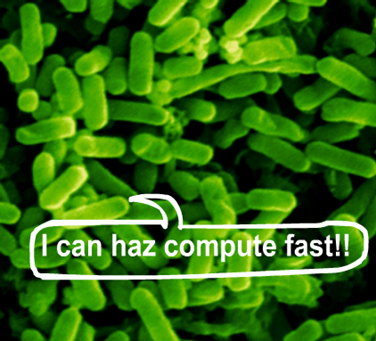While the world is debating iPhone and Bing and Netbooks, Biologists have crossed over the traditional computing boundaries of ICs and silicon in an unexplored territory: the Biological Computer! 
Biologists have synthesized E. coli bacteria into a living computer that can actually solve mathematical problems that even a fast computing machine would take time to solve!
Bacteria is known to cause diseases and other ills but in this case it’s actually solving complex computing problems. And the amazing thing is that as time passes, the bacterial computer becomes more powerful as the bacterial community multiplies and adds to the overall computing power.
Biologists tried a well-known computing problem known as the Hamilton Path problem which is actually about finding the shortest path between start node and end node. In this specific case biologists used 3 cities as 3 nodes with one of them being the starting and another being the destination.
Even though Bacterial computer is really fast because they can run processes (represented genetic alterations) but there’s a downside too: They cannot just be coded like any other computer! To code them, special genetic changes are required. For  example, in this test case, the nodes i.e. the cities have to genetically coded into the bacteria to make it work and then the results were monitored by monitoring the genetic activity taking place during the execution.
example, in this test case, the nodes i.e. the cities have to genetically coded into the bacteria to make it work and then the results were monitored by monitoring the genetic activity taking place during the execution.
There are other problems that have also been tested on Bactria Computer before like Burnt Pancake problem which is a mate metical sorting problem.
This paper describes how the biologists solved the Burnt Pancake problem with the living computer.
